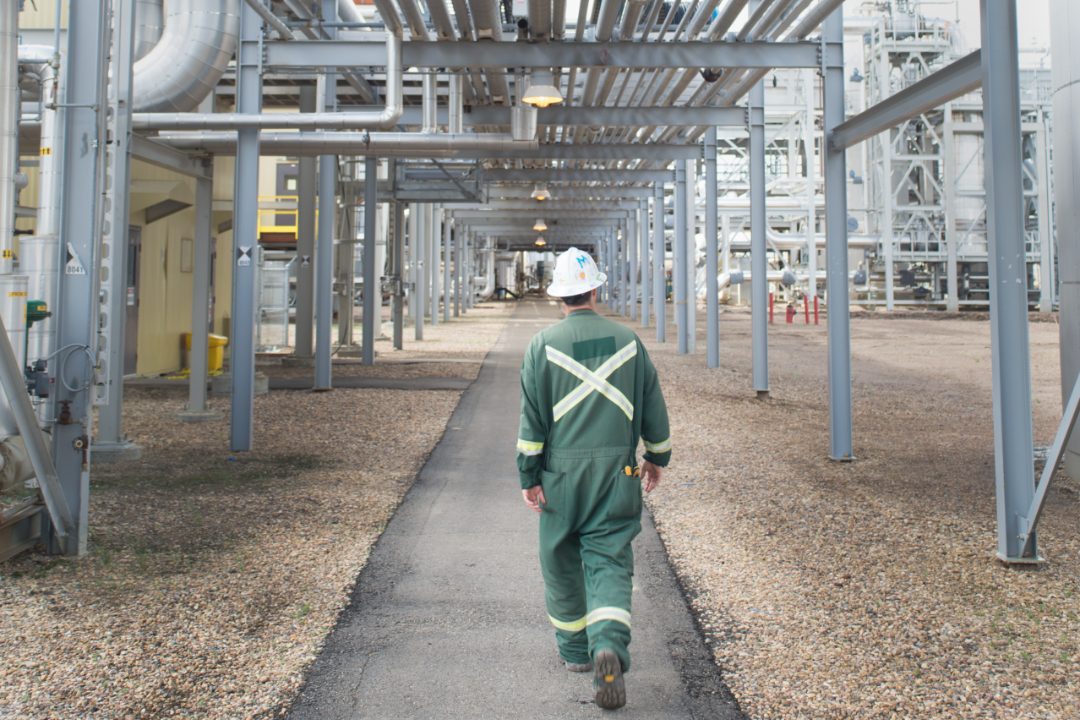The inaugural Industrial Heartland Career Forum in Fort Saskatchewan will search for workers to fill the blue- and white-collar jobs emerging in the region following major project investments from Dow, Linde, Cando Rail & Terminals, and others.
"With so much investment happening in our region, there is going to be a lot of increased demand for a local, skilled workforce to help support all these projects," Erin Brush Duncan, the director of investment for the City of Fort Saskatchewan, told Taproot. "(The event is) beneficial to the community, and it is beneficial to all of these big, industrial investments."
The forum, which is free but requires registration, will take place at the Dow Centennial Centre in Fort Saskatchewan on Jan. 30. It is a partnership between the City of Fort Saskatchewan, Lamont County, Strathcona County, Sturgeon County, and Alberta's Industrial Heartland Association. The event will feature a session for high school students and another for professionals looking to re-skill. Sponsors include Pembina Pipeline Corporation, Interior Heavy Equipment Operator School, Graham, and North West Redwater Partnership. Educational presenters include Careers in Energy from Energy Safety Canada, the Indigenous Career Centre out of NorQuest College, the University of Alberta, MacEwan University, the Heartland Industrial Training Centre, and NAIT.
Brush Duncan was clear that working in Alberta's Industrial Heartland isn't only for on-the-ground tradespeople. There are several career paths in the area, she said. "The trades are such an integral, important part of industry processes, and keeping these plants and operations running," Brush Duncan said. "But there are other parts: There are analyst positions, there are positions for people who are very tech-oriented; they can transition. There are jobs in operations that primarily use computers and technology. There's this huge growth in automation."
She added the event is not a job fair but is instead about learning. "This is a chance for you to really explore the opportunities that are out there — and how to get there," she said.
Brush Duncan pitched the forum to the event partners following a recent labour study of the northeast Edmonton region and the conversations its results inspired. The study, by Applications Management Consulting Ltd., found there is "uncertainty" in the job market across the region. It suggests "emerging energy technologies, technological advancements and diversification of the regional economy" are why more professionals in both office and field positions will be needed.
In November 2023, Dow announced a US$6.5-billion expansion to build a net-zero ethylene and derivatives complex in the region. In August, Linde announced it will invest more than $2 billion a clean hydrogen facility. And in September, Cando announced a $200-million investment to expand its Sturgeon Multi-Purpose Rail Terminal. The Heartland area is also home to companies that work in climate-marketed energy businesses like carbon capture, utilization and storage (or CCUS) and hydrogen, too.
Mark Plamondon, the executive director of AIHA, has spoken about the need for skilled workers in the Heartland, including at an event Taproot attended in October. There, on a panel with reps from ATB Financial, NAIT, and Nanostics, he highlighted that a focus on climate has also opened doors in the region.
"Not only do you have the opportunity for low-cost production of value-added energy products (in the Heartland), you now can do so in a way that has a lower carbon footprint, because of the carbon-sequestration capability in this region," Plamondon said. "A lot of companies, when they're looking to advance their next big capital project, they're looking at: 'Not only can I produce this in an economic way, but how do I do it with a lower carbon footprint?'"
The Government of Alberta tracks labour supply through its province-wide job market forecasts, its biennial occupational outlook updates, and data specific to the Edmonton region. Its 2021 to 2025 report on the Edmonton metropolitan region highlights workforce deficits that include train crews, operators for cranes, drillers, blasters, as well as utility equipment operators and controllers. Conversely, it shows that the number of workers in other trades, including electrical and construction, slightly exceeds the jobs available.

